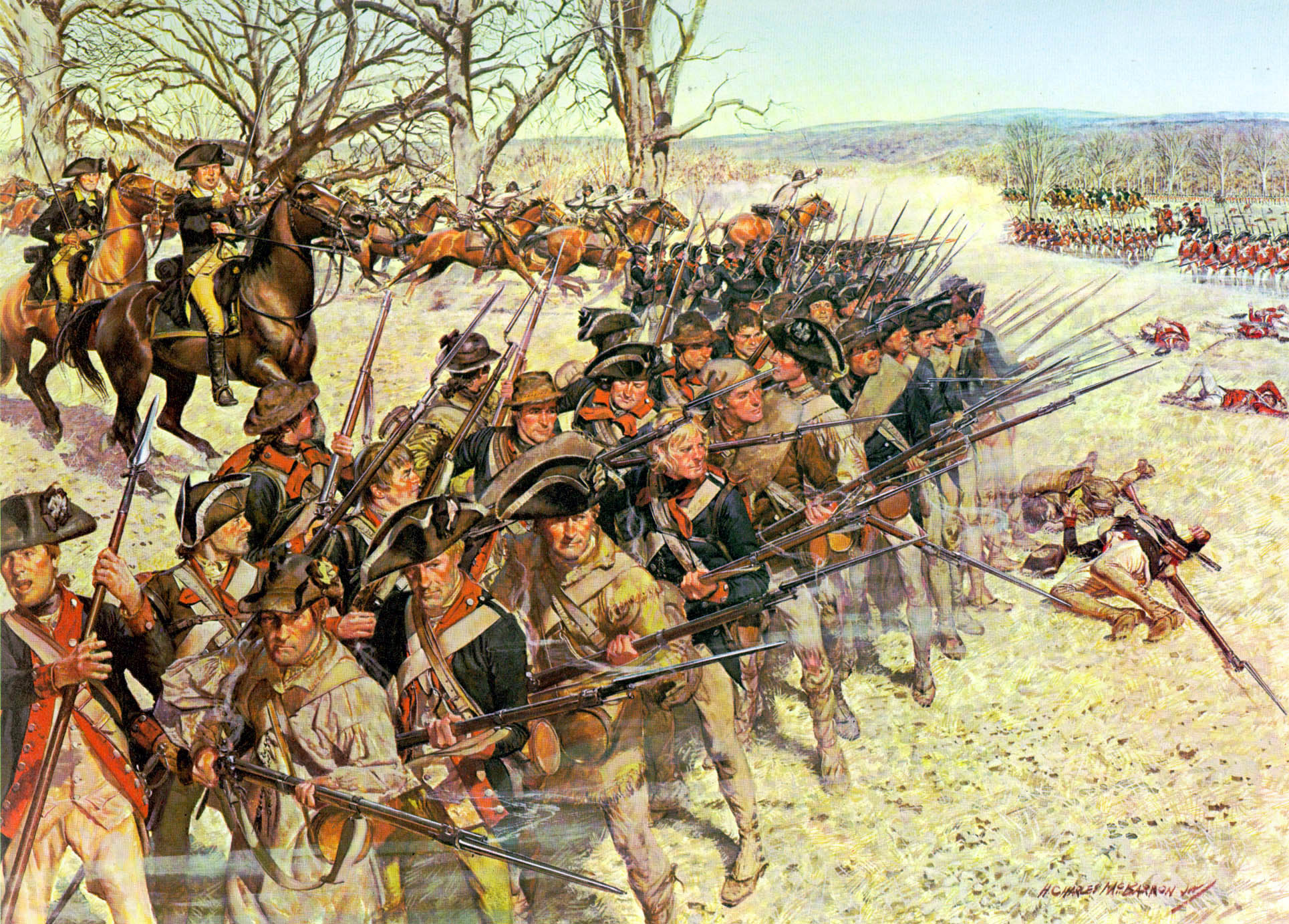The Revolutionary War Battle at Guilford Courthouse in North Carolina is not just an important moment for American independence; it’s a good lesson for everyone to remember. There are times when, no matter how hard you fight or how badly you want to win, you might still lose. But that loss could lead to an even more important battle—and a greater, more important victory.

The British Strategy Before the Battle at Guilford Courthouse
After its 1777 loss at the Battle of Saratoga, the British Army’s strategy to put down the colonial rebellion refocused on the south, where support for the mother country was strongest. Although the campaign itself was more successful than in the north, the British under Lord Cornwallis still suffered some heavy defeats. American militia held their ground at Cowpens, and the collapsing British lost a quarter of their overall strength in the southern colonies. Focused solely on destroying American Nathaniel Greene’s Army, Cornwallis burned his baggage train, taking only his wounded warfighting necessities: ammunition, medical supplies, and salt.
Starving, dying, and plundering the locals for food, the British caught up with Greene at Guilford Courthouse on March 15, 1871, where they were outnumbered by more than two-to-one. He would force Greene and the Americans into a confrontation there, one remembered as “the most hotly contested action of the Revolutionary War in the Southern Campaign.” But Cornwallis reportedly didn’t care: he didn’t even know how many Americans were there. For the British, winning the battle meant the difference between life and death.
The Intense Fighting at the Battle at Guilford Courthouse
The battle did not start well for the British. They walked along a road in a column, straight into Greene’s three lines of defense. The North Carolina militia in the first line held their ground, firing a devastating volley into the redcoats. As Cornwallis’ men moved out of the woods along the road, they found themselves in an enfilade, taking fire from two sides, but they held their own fire until they were certain of inflicting maximum pain on the rebels. Once they fired off their own volley, they surged ahead and dispersed the first line.

Greene’s second line was made up of Virginians, who put up a stiff resistance to the incoming British. But the desperate British infantry attacking on all sides soon overwhelmed them, and they too were forced to retreat. Greene’s defense in depth was falling apart, but so was the British organization. The redcoats were fragmented as they hit the third line of defense. Their first assault was pushed back by a joint force of Virginians and Marylanders. The Marylanders folded when the British advanced the second time but were pushed back in a colonial counterattack.

The attackers began to grow stronger as the American second line collapsed, and more and more British regulars began to assault the third line. Cornwallis then fired grapeshot into the melee, killing colonials and British troops alike. In response, Greene ordered his men to withdraw. In 90 minutes, the British were victorious, but Cornwallis had ruined his army. A full 27% of his force became casualties, and he was unable to follow up on his victory. Moreover, they still had no food or shelter.
Cornwallis retreated to Wilmington to refit his army, effectively abandoning the colonies he’d just won in the south. By May 1871, he would take his forces into Yorktown, where a combined Franco-American force under Gen. George Washington would force his surrender before the end of October. For Nathaniel Greene, losing a battle despite superior numbers and defenses must have stung, but the cost he forced Cornwallis to pay ensured the future independence he was fighting for in the first place.
Read About Other Battlefield Chronicles
If you enjoyed learning about the Battle of Iwo Jima, we invite you to read about other battlefield chronicles on our blog. You will also find military book reviews, veterans’ service reflections, famous military units and more on the TogetherWeServed.com blog. If you are a veteran, find your military buddies, view historic boot camp photos, build a printable military service plaque, and more on TogetherWeServed.com today.

0 Comments